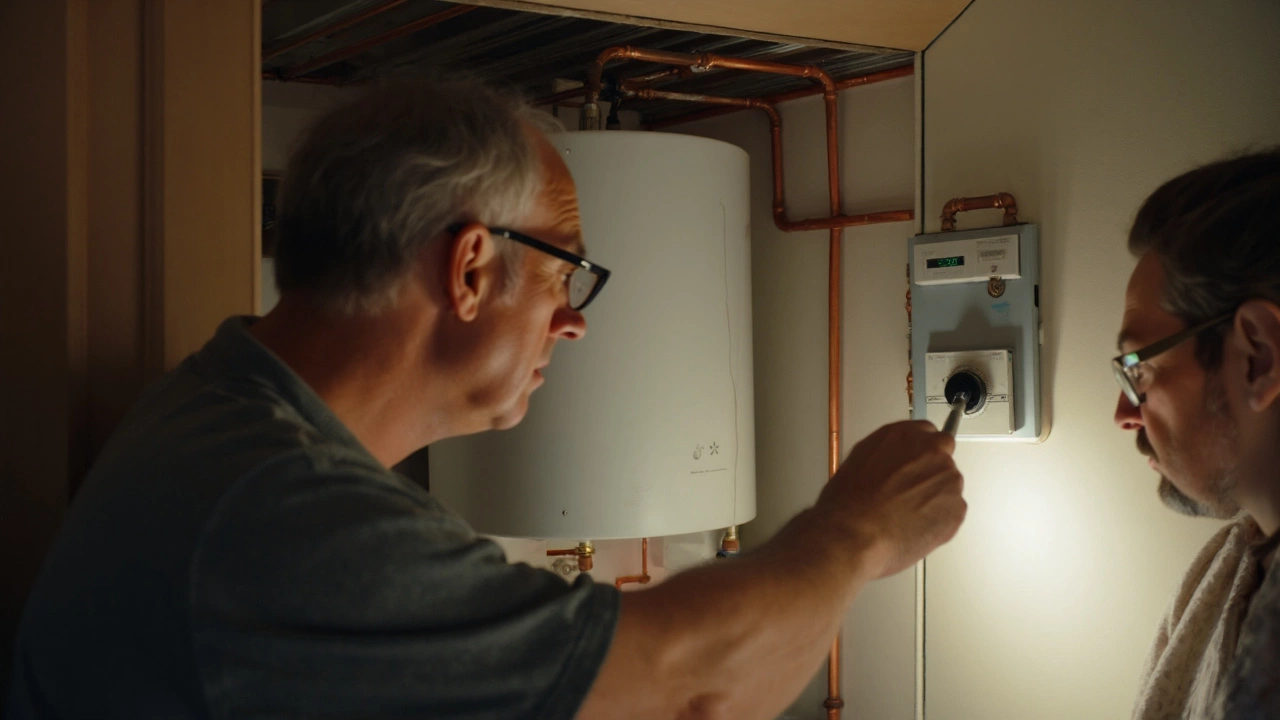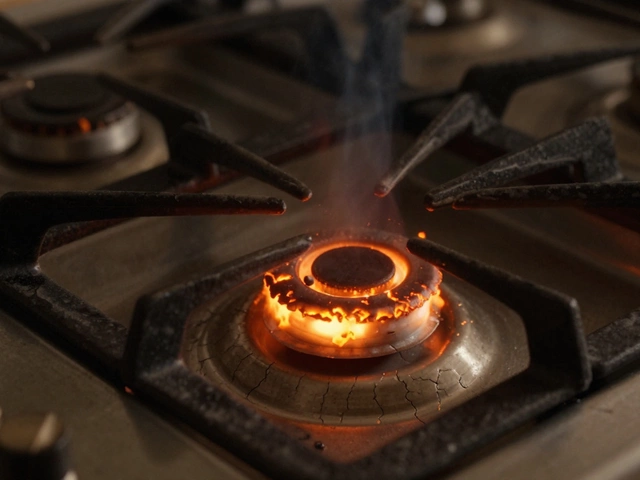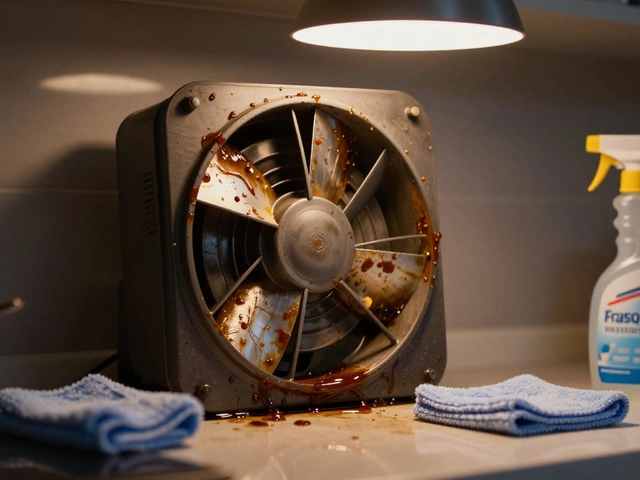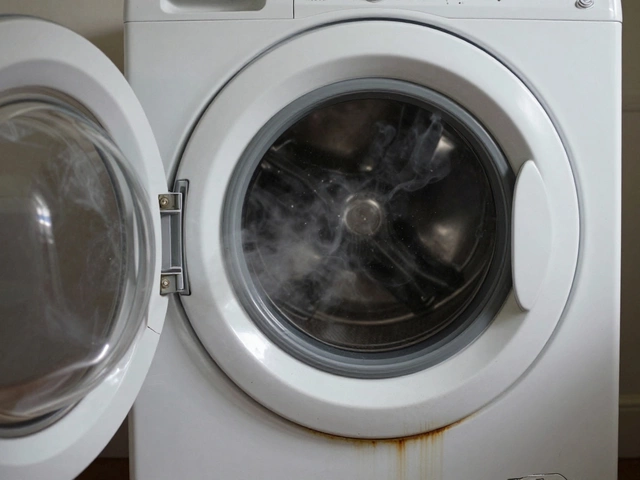You twist the hot tap and get an Arctic blast. No steam, no comfort-just cold. The good news? In most homes, you can figure out why in under 10 minutes and often get hot water back without a service call. The usual culprits are simple: no power or gas, a tripped safety switch, a failed electric element, a pilot that went out, or a tankless unit not sensing enough flow. I’ll walk you through fast checks, safe DIY fixes, and clear signals that it’s time to call a pro.
- TL;DR: If your water heater only cold water issue started suddenly, check power/gas first, then resets: breaker, GFCI, high-limit (reset), or pilot light.
- Gas tank: Pilot out, gas valve closed, or high-limit tripped. Electric tank: tripped breaker or failed upper heating element. Tankless: minimum flow not met or an error code.
- Rule of thumb: If the water is cold at every faucet and the heater is silent/dark, you lost power or gas. If you have some hot that vanishes fast, you ran out or have a failed upper element (electric).
- Safety: Smell gas? Hear sparking? Shut it down and call a licensed tech. In Canada, gas work must meet CSA B149.1; electrical work must follow the Canadian Electrical Code.
- When DIY ends: Repeated safety trips, charring/soot, leaking TPR valve, or any wiring/gas valve replacement-book a professional.
Fast answers: most likely reasons and how to get hot water now
Start here. These are the high-percentage fixes that restore hot water fast. I live in Vancouver, where the water is soft and winters are mild, so sediment and frozen lines are less common than in hard-water or deep-freeze cities. Still, the same core checks apply anywhere.
- Gas tank water heater
- Pilot light went out: relight per the label on the tank. If it won’t stay lit, the thermocouple/flame sensor or gas valve may be bad.
- Gas supply is off: the handle on the gas line should be parallel to the pipe. If it’s crosswise, it’s off.
- High-limit safety tripped (ECO): press the reset on the gas control, if your model has one (some show a status light).
- Electric tank water heater
- Tripped breaker or GFCI: reset the 240V breaker for the water heater. Some heat-pump water heaters plug into a GFCI-reset that too.
- High-limit switch tripped: remove the upper thermostat cover, press the red reset button. If it trips again, call a pro-there’s an underlying fault.
- Failed upper heating element: gives you “no hot water” or only a quick burst then cold. The upper element kicks on first; if it’s dead, the tank never heats.
- Tankless water heater
- Minimum flow not met: open the tap more, clean faucet aerators/showerheads, and check the inlet filter screen at the unit.
- Error code: read the display. Code = your cheat sheet. Power cycle once (off 30 seconds), then follow the manual.
- Cold snap issues: a blocked intake/exhaust or frozen condensate line can shut it down. Clear the blockage; thaw the line safely.
- Plumbing, not the heater
- Mixing valve stuck cold: the tempering valve on top of the tank can fail and blend too much cold. Turn it toward hotter and test.
- Shower cartridge crossover: a broken single-handle cartridge can feed cold into your hot line. If only one shower is weird, this is suspect.
- Dip tube broken (older tanks): cold water short-circuits to the hot outlet-hot runs out fast or never gets there.
Quick win: If you just used a lot of hot water, give a gas tank 30-40 minutes, electric 60-90 minutes. Tankless should be instant; no warm-up time needed.
Step-by-step: a simple flow that finds the fault
Work through this decision tree. Stop if anything smells like gas or looks scorched.
- Confirm the symptom
- Test more than one tap. If only one fixture is cold, it’s a local issue (a cartridge or a mixing valve), not the heater.
- Did the hot fade to cold during use? Tank is empty or electric upper element failed.
- Identify your heater type
- Tank with burner window or gas line = gas tank.
- Tall insulated cylinder with only electrical conduit = electric tank.
- Small wall box = tankless (gas or electric). Most gas tankless units have a vent and digital display.
- Check energy supply
- Electric: Is the breaker on? Flip it fully off, then on. If it trips again, stop-there’s a fault.
- Gas: Is the shutoff valve parallel to the pipe? Pilot flame present? Do other gas appliances work?
- Look for a reset
- Electric tank: cut power at the breaker. Remove the upper panel, peel back insulation, press the red reset (high-limit). Restore power. Listen-do you hear heating?
- Heat pump water heater: check for a tripped GFCI or a control panel error. Some have a reset in the menu.
- Gas tank: newer controls indicate status with a blinking LED. Compare blinks to the label chart.
- Tankless: power cycle; read the error code; check the inlet screen and clean it.
- Rule out a crossover (plumbing mixing cold into hot)
- Close the cold-water supply valve on top of the tank. Open a hot tap. If water still flows steadily for more than a few seconds, cold water is feeding the hot line through a failed mixing valve or faucet cartridge.
- Gas-specific checks
- Pilot status: If the viewing window is dark (no flame), follow the lighting instructions on the tank. Hold the pilot button as directed and watch for a steady flame.
- If the pilot lights but goes out, the thermocouple/flame sensor is likely bad, or the gas valve is failing. Also check for a blocked flue or downdraft.
- Power-vented units: verify the fan runs and the vent and intake are clear.
- Electric-specific checks
- After a reset, wait 10-15 minutes and test. No change? The upper element or thermostat may be dead.
- If you know how to use a multimeter safely: with power off, test element resistance (typically 10-20 ohms). Infinite = bad element. Only do this if you’re comfortable working to code.
- Tankless-specific checks
- Open one hot tap fully. If the unit fires with one tap but not another, clean the slow faucet’s aerator.
- In winter, check the condensate drain tube for ice or kinks. Clear gently; do not use open flame.
- Compare your flow rate to the unit’s minimum (commonly 0.4-0.6 GPM). Low-flow shower heads can drop below that.
- Consider age and condition
- Tank older than 10-12 years with repeated issues may be at end-of-life. Dip tubes on some late-90s models were notorious for failures.
- Safety checks
- TPR valve weeping? Soot around a gas burner? Scorch marks? Call a pro. Combustion issues can cause CO exposure.
DIY fixes you can do safely (with checklists and examples)
These tasks are safe for a handy homeowner. If anything feels off, stop and bring in a licensed tech.
Tools you might need: flashlight, screwdriver, non-contact voltage tester, pliers, bucket, towels, vinegar, small brush, replacement faucet cartridge (if needed).
Gas tank: relight the pilot (typical standing pilot models)
- Set the gas control to “Pilot.” Hold the pilot button down.
- Press the igniter until you see a flame. Keep holding the button 30-60 seconds, then release.
- Turn control to “On,” set temperature to hot. You should hear the main burner ignite.
It won’t stay lit? The thermocouple/flame sensor is likely bad. This is a common repair and often a quick part swap for a pro.
Electric tank: reset high-limit and restore heat
- Turn off the breaker. Remove the upper thermostat cover.
- Press the red reset button until it clicks. Replace insulation and cover.
- Turn the breaker back on. Wait 10-15 minutes and test for warming.
If it trips again, a thermostat may be stuck closed or an element may be shorted. Time to call a pro or replace the element/thermostat pair if you’re experienced.
Tankless: meet the minimum flow
- Clean faucet aerators and showerheads: soak in vinegar 30 minutes to remove mineral film.
- Clean the unit’s inlet water filter (usually a small screen at the cold inlet).
- Open a hot tap fully and test. If the unit shows an error code, follow the diagnostic in your manual.
Fix a likely crossover (shower cartridge)
- Turn off water supply to the home. Remove the trim and pull the cartridge.
- Inspect O-rings and the balancing spool; replace the cartridge if worn.
- Reassemble, turn water on, test hot again. Brands like Moen and Delta have easy-to-swap cartridges with clear diagrams.
Adjust a stuck mixing valve (tempering valve on top of the tank)
- Find the mixing valve (often has a hot/cold blend knob).
- Turn slightly toward hotter and test a tap. Small moves. If it’s seized or cracked, replace the valve-don’t force it.
Flush sediment (less common in Vancouver due to soft water, but still worth it)
- Turn the heater off (gas to pilot; electric breaker off). Close cold supply to the tank.
- Attach a hose to the drain, open the drain and a hot tap to vent. Drain a few gallons until clear; close and refill.
- Restore power/gas and relight if needed.
Set a safe temperature
- If you have a thermostatic mixing valve, many Canadian health authorities advise storing at 60°C (140°F) to limit Legionella, then mixing down to 49°C (120°F) at taps.
- If you do not have a mixing valve, keep the tank at 49-54°C (120-130°F) to reduce scald risk.
Source context: Health Canada guidance on hot water systems and Legionella; temperature and mixing requirements are also referenced in CSA standards for plumbing components.
| Symptom | Likely cause | Heater type | Quick check | DIY? | Typical cost (CAD) |
|---|---|---|---|---|---|
| No hot anywhere | Breaker tripped / power loss | Electric tank / HPWH | Reset breaker/GFCI; press high-limit reset | Yes | $0-$0 |
| No hot anywhere | Pilot out / gas off | Gas tank | Relight pilot; check gas valve | Yes (relight) | $0-$0 |
| Cold or goes cold fast | Upper element failed | Electric tank | Reset button; ohm test | Advanced DIY | $200-$400 (with labor) |
| No ignition, code on display | Air/vent or flow issue | Tankless | Clean inlet screen; clear intake/exhaust | Yes | $0-$150 |
| Only one shower cold | Cartridge crossover | Any | Replace shower cartridge | Yes | $40-$120 (parts) |
| Warm at first, then cold | Dip tube broken / tank empty | Gas/Electric tank | Check age; inspect particles in aerators | Pro recommended | $150-$300 (tube) / $1,600-$3,200 (replace) |
| Cold during very low flow | Below min flow | Tankless | Open tap more; clean aerators | Yes | $0 |
| Trips reset repeatedly | Thermostat/element short | Electric tank | Reset once; if repeat, stop | No (after repeat) | $250-$500 |

When to call a pro, costs, and how long it takes
Here’s the honest line between a Saturday fix and “book someone.”
- Call now if you notice:
- Gas smell, soot, or scorch marks.
- TPR valve leaking or constant discharge.
- Breaker that won’t reset or trips again.
- Repeated high-limit trips after a reset.
- Rusty water plus leaks around the tank shell.
- Typical Vancouver 2025 ranges (ballpark):
- Service call/diagnostic: $129-$199.
- Thermocouple/flame sensor: $120-$250 installed.
- Gas control valve: $450-$900 installed.
- Heating element + thermostat (one set): $200-$400 installed.
- Mixing valve replacement: $300-$600 installed.
- Dip tube replacement: $150-$300; many older tanks get replaced instead.
- Standard 40-50 gal tank replacement: $1,600-$3,200 installed (permit included).
- Condensing tankless replacement: $3,200-$5,500 installed.
- Annual flush/maintenance: $130-$250.
- Timeframes:
- Relight/element swap: 30-90 minutes.
- Gas valve: 1.5-3 hours.
- Full replacement: 3-6 hours (tankless can take longer if venting changes).
Why the caution with gas and electrical? In Canada, gas work must comply with CSA B149.1 and local permits; electrical with the Canadian Electrical Code. Techs also follow manufacturer procedures-Rheem, Bradford White, A. O. Smith, Rinnai, Navien-because controls vary by model.
Cheat sheets: quick checklists, rules of thumb, and pitfalls
Use these to move fast and avoid damage.
90-second checklist
- Multiple taps cold? Yes = heater or main plumbing; No = local fixture issue.
- Gas or electric? Look for a gas line, vent, or control panel.
- Energy supply on? Breaker ON, gas valve parallel to pipe.
- Any reset available? Electric high-limit, tankless power cycle, gas control LED.
- Try hot-only at full blast at one tap. Tankless needs flow to light.
Rules of thumb
- No hot after a party, then fine later = recovery time, not a failure.
- Electric tank: no hot at all usually equals upper element/thermostat; lukewarm equals lower element.
- Gas tank: no pilot, no burner-start there before suspecting the gas valve.
- Tankless: no code but no heat at a trickle? You’re under the minimum flow.
Pitfalls to avoid
- Do not open the electrical covers with the breaker on.
- Do not cap or block a TPR valve discharge. It’s a safety device.
- Do not crank temp to max to “force” hot water. You’ll risk scalding.
- Do not relight if you smell gas. Ventilate and call a pro.
Preventive moves that pay off
- Annual quick flush: a few gallons keeps sediment down.
- Clean tankless inlet screens and descale per manual (usually yearly).
- Set a sane temperature and verify the mixing valve works.
- Label your breaker and gas valve so anyone can find them fast.
Mini‑FAQ: quick answers to the stuff people ask
Why is there warm water for 30 seconds then cold?
You’re getting residual hot from the line. If you have a tank, the upper element may be dead. On tankless, the unit might be under minimum flow or showing a “cold sandwich” between starts.
Only my shower is cold. The sinks are fine. Why?
The shower’s mixing cartridge is likely bad. Replace it and the hot should return. It can also cause cold to backfeed into your hot line.
My gas water heater’s pilot won’t stay lit.
Commonly a failed thermocouple/flame rod, weak pilot flame, or a faulty gas valve. Also check draft-blocked flue or heavy downdraft can blow out small pilot flames.
Electric heater: I pressed reset. It tripped again.
Stop there and call a tech. Repeated trips mean a thermostat stuck closed or a shorted element. That’s a real hazard if ignored.
Tankless shows an error code 11/12 (typical ignition errors).
Usually ignition or gas supply related. Check gas is on, clean the inlet screen, confirm vent/intake are clear, and then follow the manual’s diagnostic tree. If the code persists, book service.
Could my dip tube be the problem?
Yes if the tank is older and you get short bursts of hot, then cold. You may also find white plastic crumbs in aerators. A pro can replace the dip tube quickly.
Is it safe to set the tank to 140°F (60°C)?
Only if you have a working thermostatic mixing valve to blend to 49°C (120°F) at the tap. Health Canada supports 60°C storage to reduce Legionella risk when mixed down safely. Without a mixing valve, stick to 49-54°C.
Next steps and scenario‑based troubleshooting
- Condo with shared venting (common in older Vancouver high-rises): If your neighbor’s work just finished and your pilot went out, ask building management. Draft changes can snuff pilots.
- Heat pump water heater in a cool garage: Switch from “Heat Pump Only” to “Hybrid” during heavy use; recovery will be faster.
- Outdoor tankless during a storm: Check wind-driven debris at the intake/exhaust and the condensate drain. Clear gently and power cycle.
- Short-term workaround: For a day without hot water, boil pots to wash dishes and take a Navy shower. Don’t raise the heater temp to compensate.
You have a plan now: verify energy, press the right reset, rule out crossovers, and handle the easy maintenance. If you hit a safety trip twice, see soot, or face wiring or gas valve work, get a licensed pro. That’s the line between smart DIY and risky repairs.



